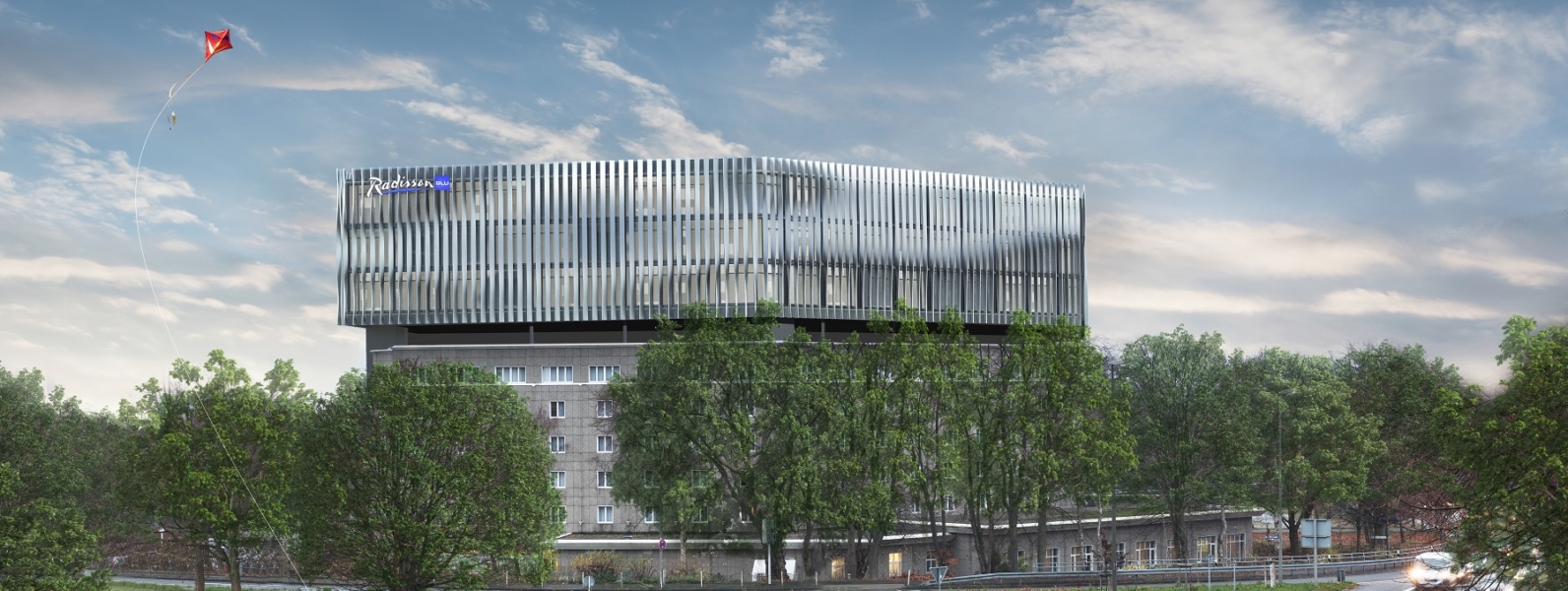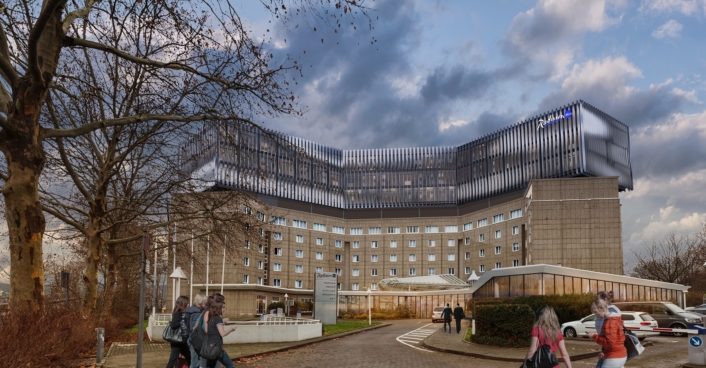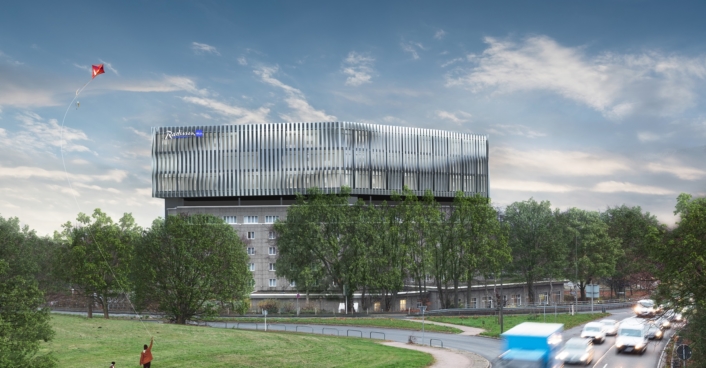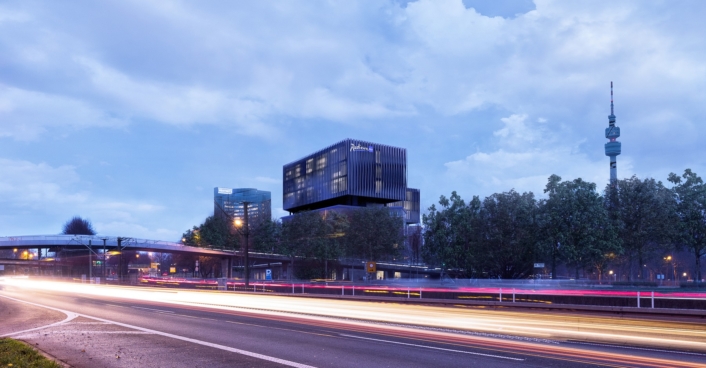Radisson Blu Hotel Dortmund
Expansion and extension of a city hotel
Competition design: With your feet in the park and your head in the clouds
The expansion of the existing Radisson Blu hotel building not only offers the opportunity to significantly increase the number of rooms on offer. At the same time, it offers the urban planning opportunity to elevate the building, which has disappeared behind the trees, in the sense of “solitaires in the green space” and thus formulate a striking entrance to the city.
The urban environment between Schnettkerbrücke and Westfalenpark south of the B1 is characterized by its green and open character. Interspersed throughout this area are individual solitary buildings that are elevated as important urban building blocks such as the stadium, the Westfalenhalle, large administrative buildings and the Florian and form important landmarks.
The existing hotel follows the same solitary principle, but due to its low height it cannot develop its effect and important function as a city entrance on the Ruhrallee/B54, but disappears invisibly into the old dense tree population.
The extension offers the opportunity to give the existing building a crown that can be seen from afar and thus create a dominant urban entrance. At the same time, the existing building and extension are visibly separated from each other and their independence is strengthened.
This solution is also ideal from a functional point of view, as it creates large, contiguous storeys that can be managed extremely cost-effectively. On the other hand, the short distances of the existing building can be optimized once again by installing an additional elevator system in the center of the building, which meets the requirements of the high-rise building regulations without disrupting existing functional relationships.
In order to be able to implement the extension during ongoing operations and to keep the impact to a minimum, a supporting structure was developed for the extension that runs in front of the façade of the existing building. After the insertion of micro bored piles, which can be produced within the basement floors using equipment, the external columns, which are visually integrated into the existing façade, support the truss construction of the extension.
The three-storey timber frame means that there is no need for internal supports in the existing building. At the same time, sufficient installation spaces are also kept free in the extension in the longitudinal direction of the building.
For the façade, we propose a louvre construction that acts as a second skin over the window façade of the rooms. The slats are twisted and thus offer an exciting variety that allows different views from every perspective. Overall, the façade also emphasizes the lightness of the extension architecturally and thus finds its external counterpart.
In addition to the extension, the existing restaurant on the first floor will be extended to the east. The existing parking spaces can be retained in their entirety. In addition, the terrace will be rearranged and extended along the entire eastern side of the building. Here – unlike in the extension – the existing roof edge of the existing building is continued so as not to create a visual separation. However, it is recommended that the first floor façade below the edge of the roof up to the main entrance be opened up more visually in order to give the new extension a contemporary look from the outside in the entrance area.
Overall, the internal demands for additional space can be used to optimize the existing urban development. The demands of the city and the owner can be combined very conclusively and developed into a new significant building with urban appeal.
The design was awarded 2nd place in the competition.
Figures and
Facts
- Client: Pandox Dortmund GmbH
- User: Radisson Blu Hotel Dortmund
- GFA: approx. 14,900 m²
- Scope of services: Participation in the 2019 competition
- Placement: 2nd place after competition
- Place: Dortmund




